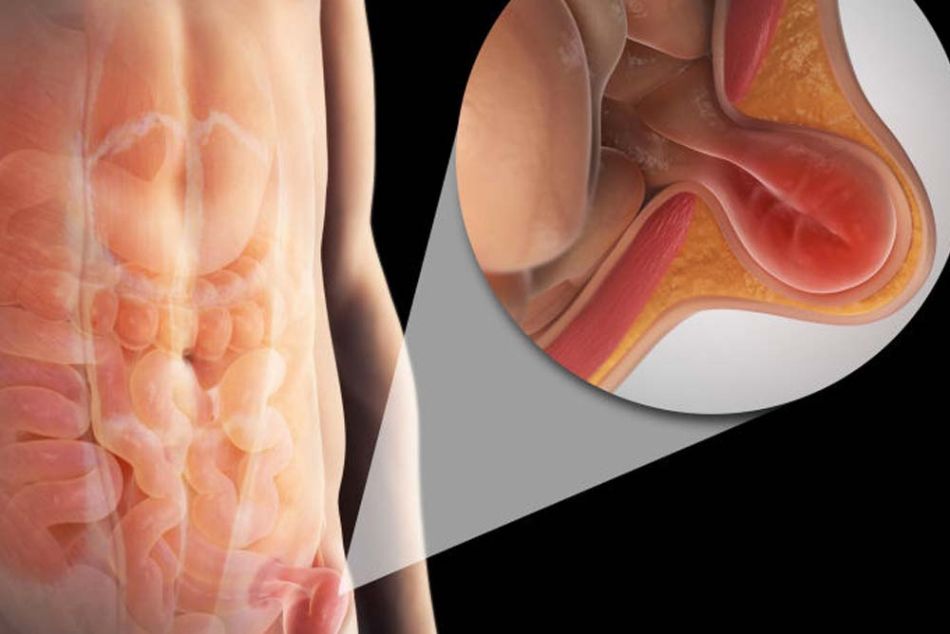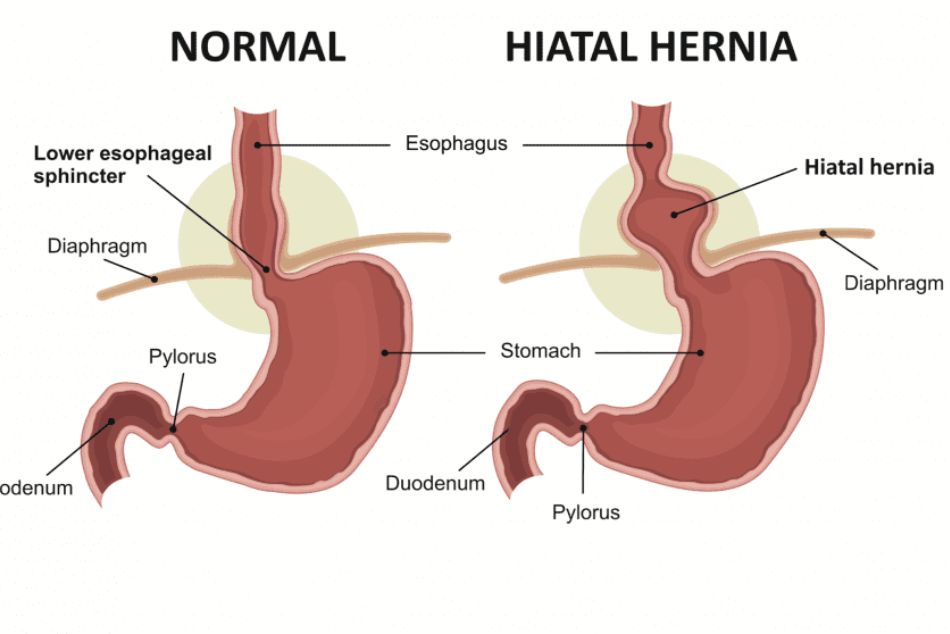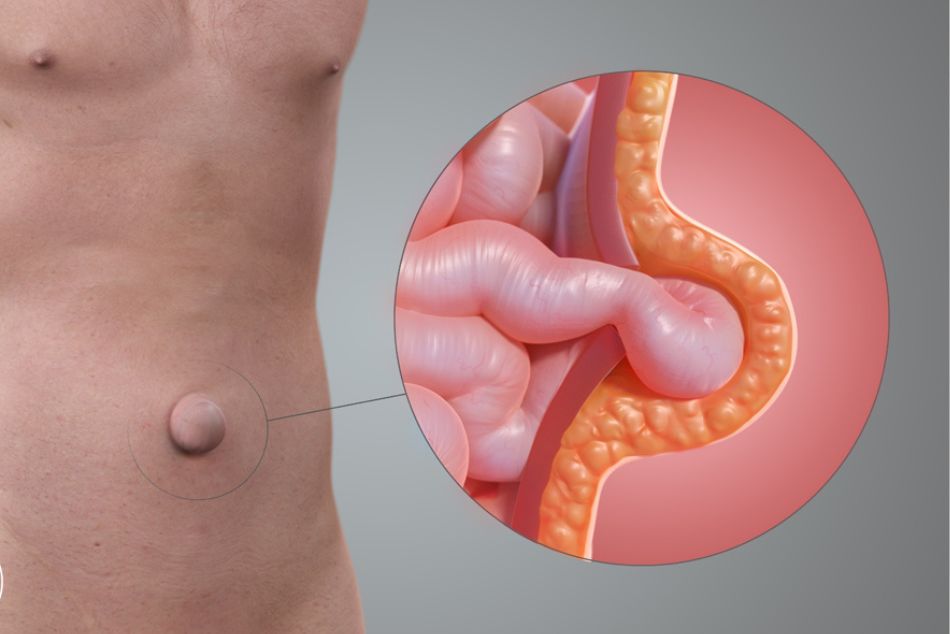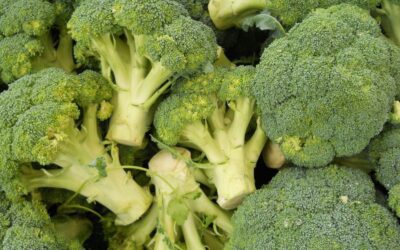Here’s How to Prevent Hernia and Maintain Abdominal Strength With Expert Tips
No one wishes to witness any injury when it comes to gym and workout. But, sometimes, circumstances occur where you or someone else find themselves for a forced reality check as a setback through injury. Usually, these lifting injuries that arise in the gym are due to poor form, overtraining, or under-recovering. And one such injury is a hernia, which could result from all or any of the mentioned reasons for injury. Nonetheless, in this blog, we will cover how to prevent hernia, but before that, let’s understand what’s hernia and its types.

Hernia – What Is It?
A hernia occurs once part of your organ or fatty tissue squeezes through a weak spot of surrounding connective tissue or muscle known as fascia, primarily because of pressure within that region that happens during physical exertion. Similarly, most of the hernia involves one part of the abdominal organ pushing through the abdominal cavity wall.
Hernia usually happens once a person starts getting older or due to regular wear and tear on muscles that begin to add up. Though, there’s a possibility that a hernia may occur due to injury, birth disorder, or even due to surgery.
Further, Hernia can be extremely painful. And in some cases, the person may need immediate emergency treatment if:
- Hernia is extremely painful, swollen, red, or growing at a fast pace.
- Feel bloating or constipation.
- Vomiting or nauseous feeling.
- Fever.
Some Common Locations Where Hernia Mostly Occurs
- Lower chest through the diaphragm.
- In the groin region through the lower abdominal wall.
- At the front midline section of your abdomen part.
- Due to any prior surgery incision of the abdominal region.
Types of Hernia
Usually, there are nine different types of hernia Umbilical hernia, Inguinal hernia, Hiatal hernia, Incisional hernia, Femoral hernia, Epigastric hernia, Spigelian hernia, Diaphragmatic hernia, and Perineal hernia.
However, three are the most common that are often faced by lifters, and they’re:
Inguinal Hernia
Inguinal hernia, also known as groin hernia. It’s a hernia type of abdominal cavity contents through the inguinal canal. It occurs once the tissue breaks through your groin fascia and descends towards the scrotum area.

Some common symptoms often seen in Inguinal hernia include pain, discomfort or pain at the time of exercise, coughing, or bowel movement.
Hiatal Hernia
A hiatal hernia happens when your stomach bulges upwards through your diaphragm or if the muscle divides your abdominal area from your chest. In other words, it occurs once the tissue breaks through the abdominal fascial of your upper stomach region.

Some common symptoms you may notice are shortness of breath, feeling full after eating, blood vomit, black stool, chest or abdominal pain, difficulty swallowing, and regurgitation of liquid or food in your mouth.
Umbilical Hernia
An umbilical hernia is a type of hernia where your abdominal wall behind the navel gets damaged. Usually, the cause is that the navel gets bulged outwards, the bulge that consists of your abdominal fat from the greater omentum or sometimes part of the small intestine.
In other words, an Umbilical hernia is a hernia that happens in your belly button area. The reason behind its occurrence is the tissue lining with the abdomen doesn’t close over the belly button area, and your organ within the abdomen bulges outward.

Commonly seen symptoms include a full round abdomen, red, purple, dark, or discolored bulge, vomiting, constipation, fever, or abdominal pain & tenderness.
Nonetheless, you’ll see the bulge or protrusion in all types of hernias. Also, a hernia needs a surgical repair and depends upon the tissue that makes its way through the fascial lining, which can be painful and require immediate medical attention.
Here’s How to Prevent Hernia When You’re Lifting Weights
Heavy lifting at the gym is one of the main reasons adults who go to the gym suffer from the hernia. The occurrence of hernia because of heavy weight lifting is quite common in people who aren’t regular in the gym, and when they go, they try lifting heavy weights after a long period of break. Nonetheless, go through below expert tips to prevent hernia:
Warm Up Properly
Heavy liftings put a lot of stress on your body. Hence, it’s best to warm up before you start lifting weights or go with any other workout routine. Warm-ups are crucial to prevent hernia and other injuries often occurring during workouts.
Go Slow
No gym trainer will ever tell anyone to start lifting the heaviest weight from day one. It’s recommended that you lift within your capacity and increase weights as much as your body can handle over the period. Anyone who goes to the gym to build muscles must know that that person should be able to control the lifted weight, and weight shouldn’t be controlling the person.
Improve Your Breathing Technique
Make sure you’re breathing properly. You should inhale when you’re lowering the weights and exhale at the time of pushing it. Abdominal breathing is safe, and it also stabilizes your torso.
Avoid Forced Reps
Forced reps are one of the techniques that bodybuilders often use, but they know what they’re doing and take all the necessary precautions. Hence, it’s best to avoid forced reps if you’re not an experienced lifter or haven’t done it before, as it often leads to injuries. Similarly, it’s not used from the very beginning as it’s an advanced technique.
Maintain Healthy Weight
People with healthy weight balance also have a balance between internal & external air pressure regulated through respiration. For instance, when the person inhales air, the pressure rises, and when they exhale, the pressure falls. Hence, it’s recommended that you maintain a healthy body weight.
Regularly Exercise With Proper Form
Going to the gym and hitting weight should be taken as a lifestyle, and a person should attend the gym regularly. And, when it comes to increasing weight, they should gradually do it along with the proper form.
For instance, to take a squatting position and keep your back straight to the point of being vertical whenever you lift any heavy weight. Also, ensure you’re eating the right food, like fruits, vegetables, and whole grains, as this food is fiber-rich and helps prevent constipation.
Not Lucky Has Undergone Hernia Surgery Earlier
For those who aren’t lucky enough to avoid it in the first place and had a hernia earlier, for them here below is an answer to the question of how to prevent hernia from happening again by making certain adjustments:
Soft Tissue Massage on Your Hip Flexors
The inguinal part of your body is next to the hip flexor complex. Hence, invasive surgery such as hernia repair can mess with the quality of the tissue of that entire region.
It’s easier to lose flexibility and mobility at the joint because of inflammation, the healing process, and scar tissue buildup. Hence, getting an active release technique (A.R.T.) massage on your iliacus and psoas muscle is helpful.
Avoid Explosive Fast Lifts and Keep Controlled & Slow Movements
It’s best to kill the urge to lift big weights on squats and deadlift exercises until you don’t fully recover. Similarly, avoiding explosive movements such as kettlebell swings and jumps is best.
Go Easy With Abs Exercise
Don’t go aggressive on abs workout; keep it easy, like doing dead bugs exercise. And modify your workout level as and when you comfortably start recovering.
Closing Thoughts
Whether it’s a hernia or any other type of injury, no one would like to have it. Nonetheless, whether you’ve had hernia surgery before or never had a hernia, here are some of the recommended tips you can follow that answer your question on how to prevent hernia or prevent hernia from happening again post-surgery.
Everyone, who goes for too long in the gym, earns a few battle scars, but how our reaction is towards it determines our fate in the long run.









